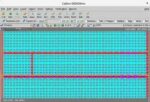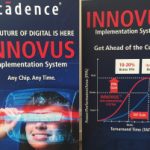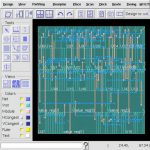Custom and analog/mixed-signal IC designs have some unique IP and symmetry checking requirements for physical design. Waiting until the end of the IC layout process to verify IP instances for correctness or proper symmetry will cause project delays, so an approach to perform earlier physical verification makes more sense. … Read More
Tag: physical design
Upskill Your Smart Soldiers and Conquer the Chip War in Style!
My recent article, ‘Chip War without Soldiers’ explained the importance of upskilling and preparing the chip design workforce in this current scenario, and it also explained how it will lead to ‘Fabs without Chips’ if we don’t prioritize it. VLSI Engineers are the pillars of the semiconductor industry, and they can only transform… Read More
Is there anything in VLSI layout other than “pushing polygons”?
As I travel a lot in the last 15 years and visited customers as well as friends I was many times invited to talk to the Layout teams. The main purpose is always to encourage automation. So I developed a presentation related to market trend, technology trends, and latest tools advancements. In many cases I present updates from DAC (Design… Read More
HiSilicon’s Experience with Synopsys ICC2
At TSMC’s OIP Symposium last month, Zhe (Jared) Lui of HiSilicon presented their experiences with Synopsys’ ICC2 physical design suite.
Jared started by giving an overview of Huawei and HiSilicon. HiSilicon is the semiconductor arm of Huawei. I assume everyone knows who Huawei is. To a first approximation they … Read More
Automating Timing Closure Using Interconnect IP, Physical Information
Timing closure is a “tortoise” for some system-on-chip (SoC) designers just the way many digital guys call RF design a “black art”. Chip designers often tell horror stories of doing up to 20 back-end physical synthesis place & route (SP&R) iterations with each iteration taking a week or more. “Timing closure”, a largely… Read More
Innovus: Cadence’s Next Generation Implementation System
Yesterday was the first day of CDNLive. There were three keynotes. The first was by Lip-Bu Tan, Cadence’s CEO (and the Chairman of Walden International that he will be the first to remind you). The most interesting tidbit was that Cadence now has over 1000 people working on IP and that it represents 11% of their revenue. Then… Read More
Cadence Digital Flow
Cadence has a series of webinars about their digital flow, focused on 28nm design. It is easy for all of us in the EDA ecosystem to assume that everyone is already doing 20/22nm design, if not 14nm already. But in fact most designs are still being done at 45nm and 65nm; 28nm is still a big challenging step.
One of the tools in the Cadence… Read More





